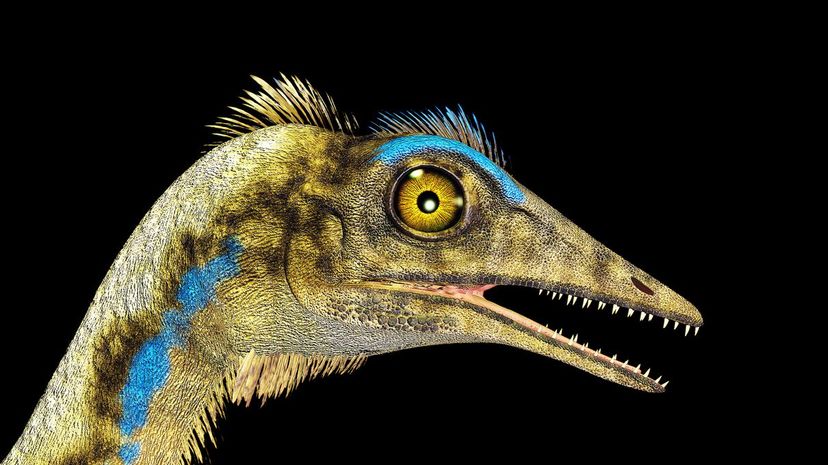
About This Quiz
"Are you a dinosaur enthusiast? Do you think you can identify 40 different species with identify dinosaurs by picture? Test your knowledge with this fun quiz that will challenge your dinosaur expertise! From the T-Rex to the Velociraptor to the Brontosaurus, see if you can match each image to the correct prehistoric creature.
With over 700 different species of dinosaurs discovered so far, there's a lot to learn about these fascinating creatures that once roamed the Earth. From tiny dinosaurs the size of chickens to massive creatures weighing over 100 tons, there's a dinosaur for everyone to love. See if you can spot your favorites in this quiz!
Dinosaur fossils have been found all over the world, sparking curiosity and wonder in people of all ages. Take a break from your day and dive into the world of dinosaurs with this entertaining quiz that will put your knowledge to the test. Who knows, you might just discover a new favorite dinosaur along the way!
"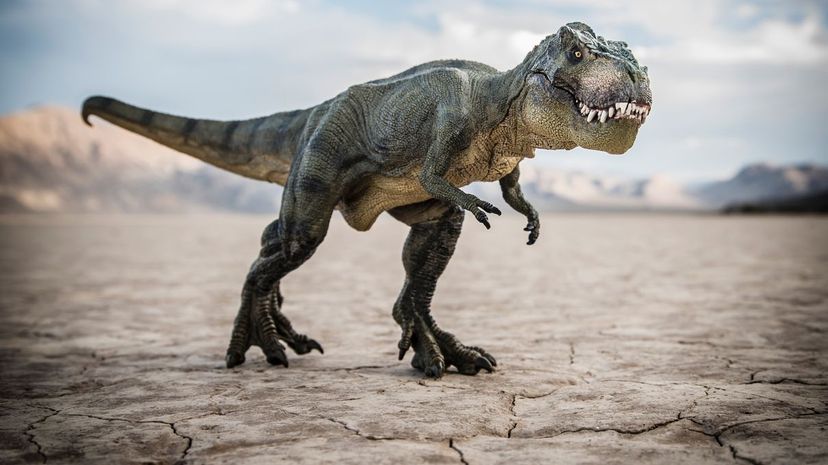
Also known as the Tyrannosaurus Rex and the T-Rex, this beast is estimated to weigh over 32,000 pounds. Most of its remains are found in the now Western United States and Canada. It is one of the most well-known carnivores.
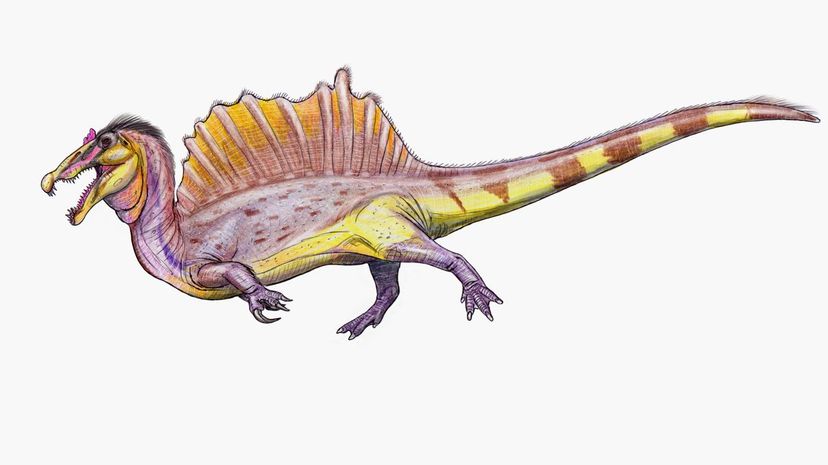
The Spinosaurus is considered the largest carnivorous dinosaur that has been discovered to date. They could get up to 46,000 pounds and were 23 feet high and over 50 feet long. They were discovered in Northern Africa.
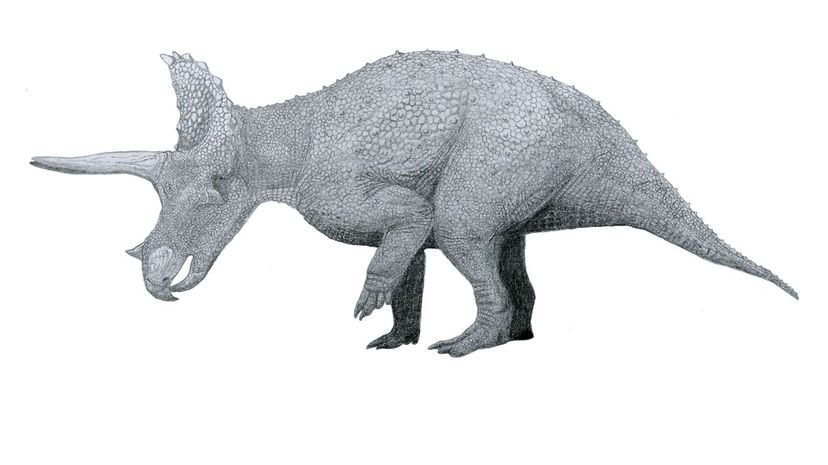
With three horns on its head, the Triceratops' name describes it perfectly. It was first discovered in 1887 in Denver, Colorado. These herbivores were indigenous to the area now known as North America.
Advertisement
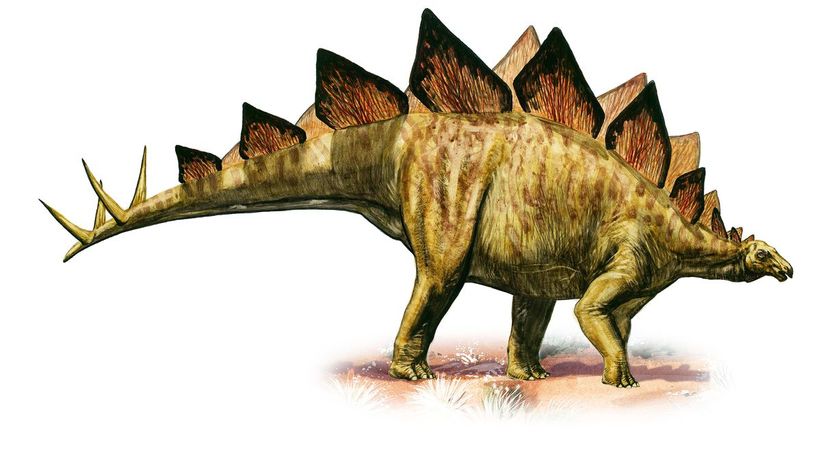
The Stegosaurus may look like it's well protected with a weapon for a tail and large plates on its back. However, it found itself part of several carnivore's diets, including the Torvosaurus and Allosaurus.
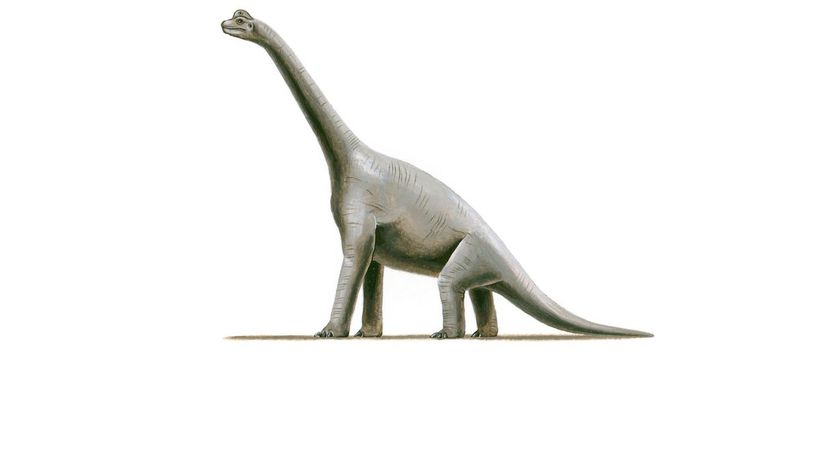
Looking very much like a Brontosaurus, the Brachiosaurus was discovered in western Colorado in 1903 by Elmer Riggs. These long-necked dinosaurs could get up to nearly 100 feet long.
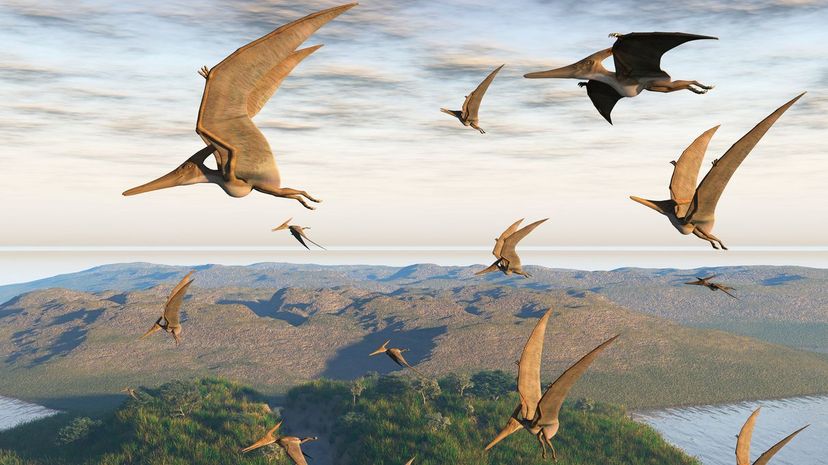
The Pterodactyl is one of the most well-known flying dinosaurs around. It was the first dinosaur to be characterized as a flying reptile. While it can fly, there are no signs that the Pterodactyl has feathers.
Advertisement

The Diplodocus and Brontosaurus might look very much alike, but the Diplodocus's tail was longer than that of the Brontosaurus as well as its neck. However, the two are closely related.
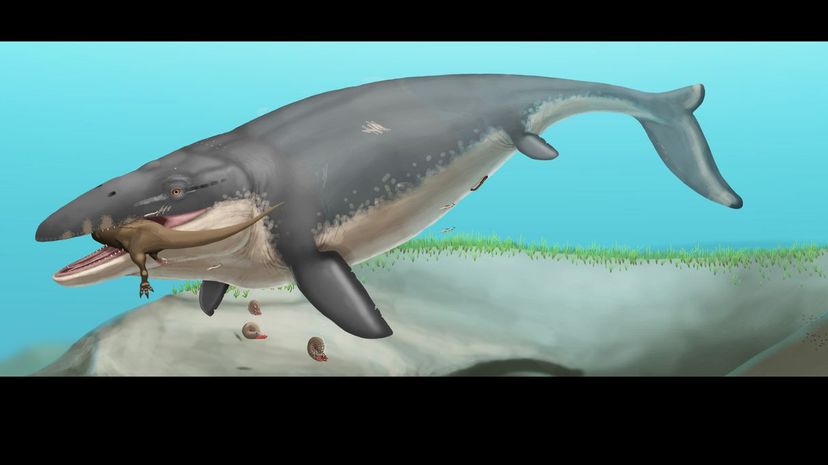
Estimated to be about 50 feet long and nearly 30,000 pounds, the Mosasaurus lived about 70 million years ago, and it made sounds like a walrus. Its remains have been found in Western Europe and north America.
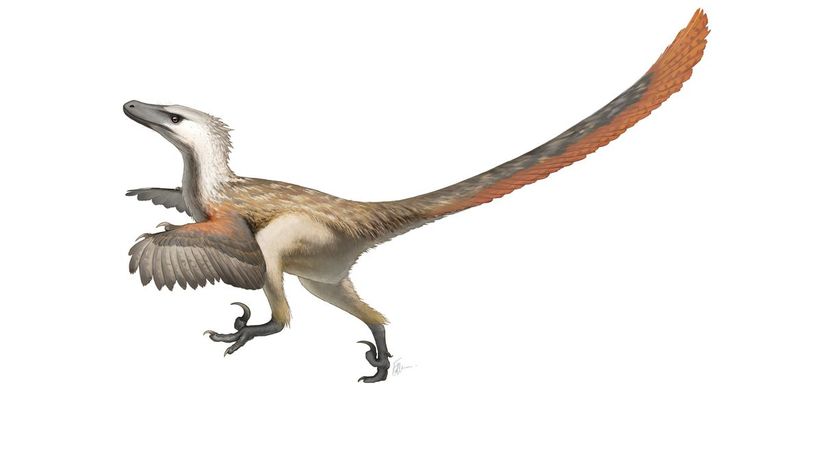
You may think of the Velociraptors from "Jurassic Park" and be in complete denial, but scientists have found quill knobs with the fossils of Velociraptors, proving that they had feathers ... even if they weren't covered in them.
Advertisement
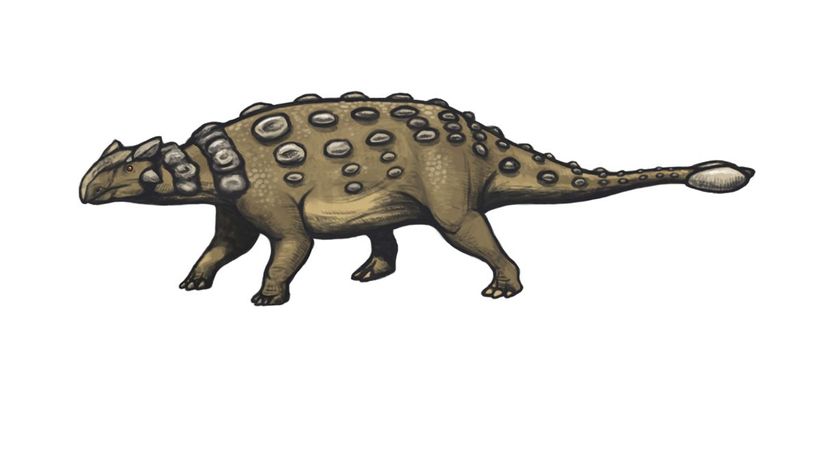
On its four legs, the Ankylosaurus stood about the size of a human (around five and a half feet high). Its armor was so heavy that it had to eat quite a bit of food to gain the strength to support itself.
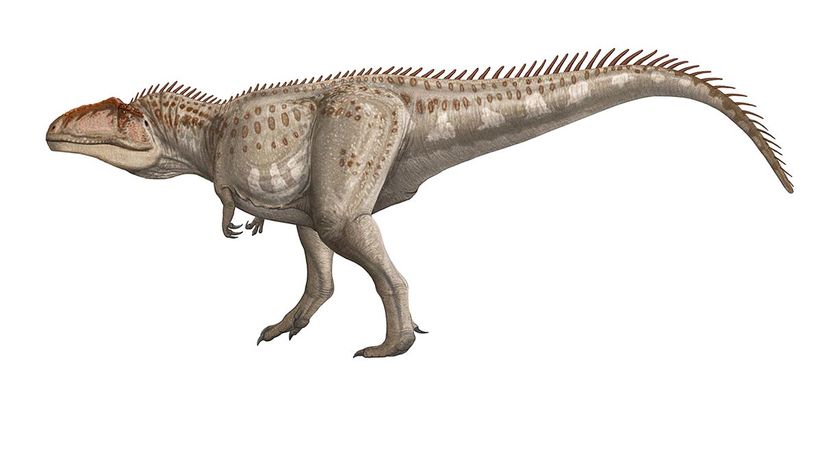
This spiny carnivore lived around 95 million years ago, but it wasn't discovered until 1993. It has a very distinct look as well as teeth that were eight inches long and serrated (much like a steak knife.
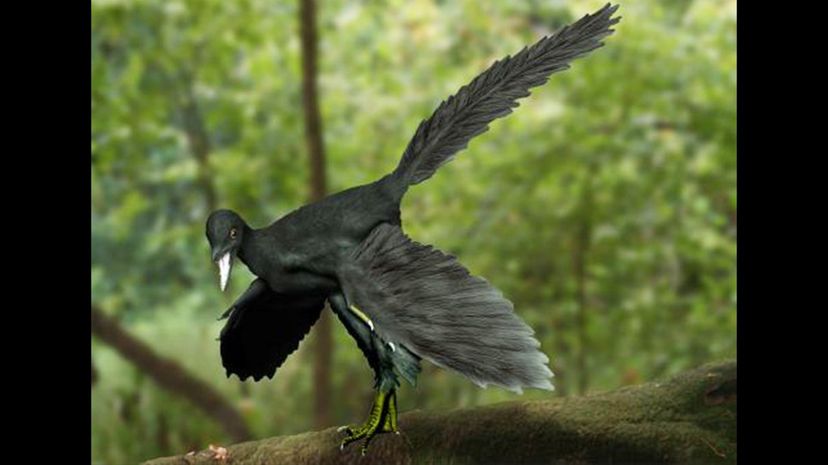
The name Archaeopteryx actually means "old wing," This seemingly mythological creature lived about 130 million years ago, during the Jurassic Period and had wings with feathers on them.
Advertisement

The Pteranodon boasted a wingspan of nearly 18 feet long (in the males) when the creatures were fully grown. These giant flyers were found across the Great Plains region of the United States.
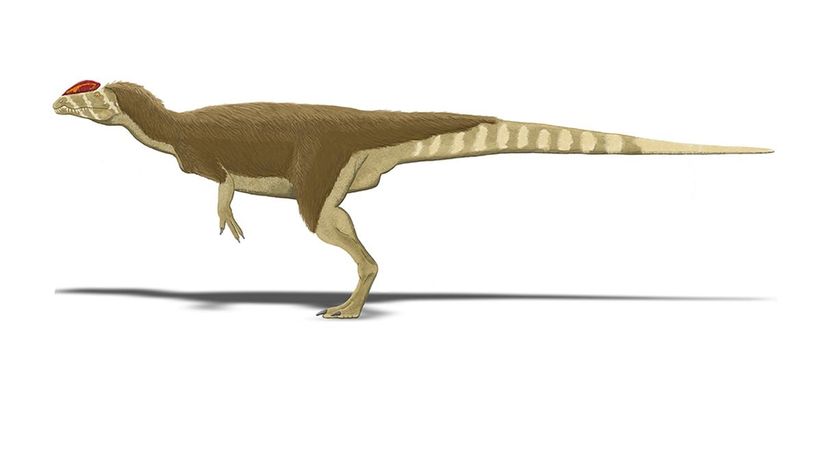
The crests on this dinosaur's head most likely made it look terrifying. It was first discovered in 1940 in Arizona. The three skeletons that were originally found took two years to collect.

The Nigersaurus lived in what is now Africa (specifically, Niger). This 30-foot beast shared its habitat with several other species of dinosaur, including several other large herbivores. There was strength in numbers back then.
Advertisement
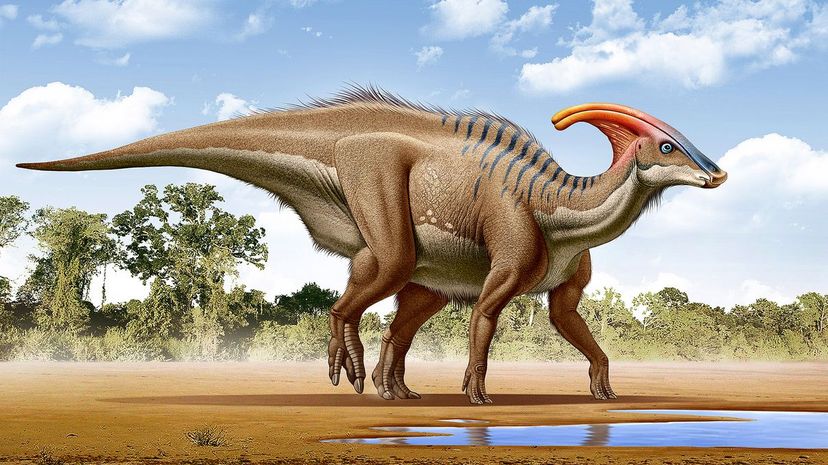
As one of the most distinctive dinosaurs we've found to date, the Parasaurolophus has a uniquely shaped skull. It was nearly 30 feet long and would walk on four legs to collect small plants from the ground.
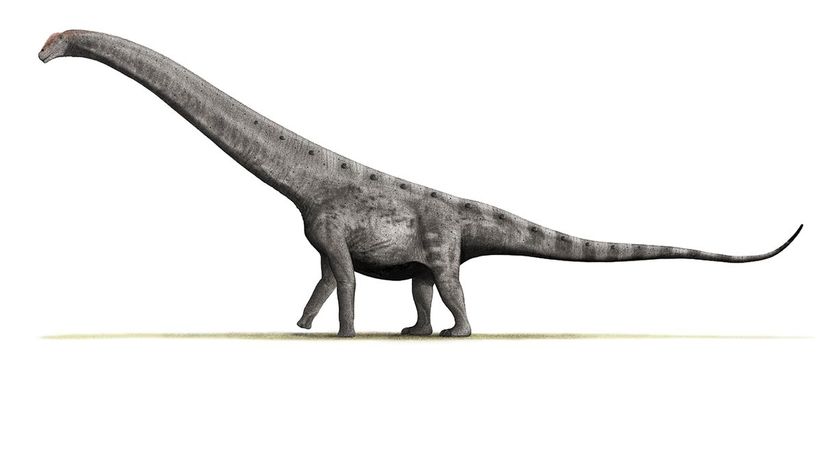
This long-necked dinosaur was an herbivore, like most others of its kind. It lived nearly 100 million years ago, and it was on the menu for predators like the Mapusaurus, even though it was over 100 feet long.
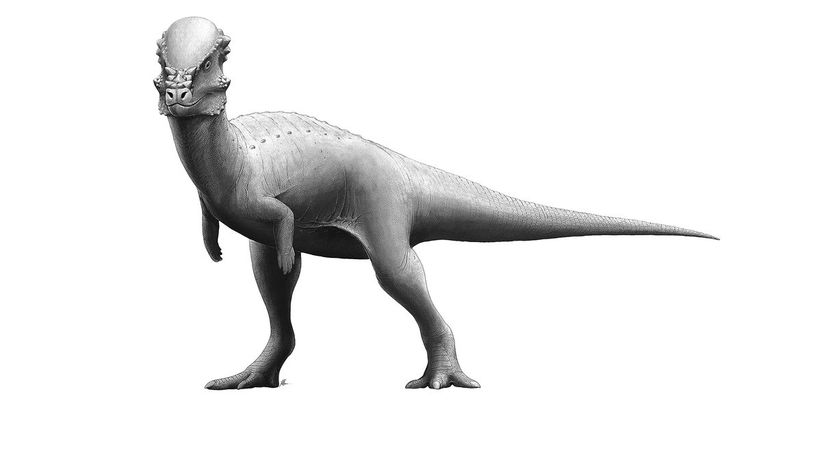
The Pachycephalosaurus was a dinosaur with a built in helmet on its head. It used this helmet to fight off predators. It's name means "thick-headed lizard," and for a good reason too.
Advertisement

You might expect an Iguanadon to look a little more like an iguana, but this dinosaur looks closer to a raptor. Even though it reached nearly 33 feet long, it weighed between three and four tons.

With a mouth like that, the Baryonyx easily had no trouble fitting food in its mouth. Though it only weighed around 3,700 pounds, it could take down an Iguanodon with ease, and good thing, because that was its food of choice.
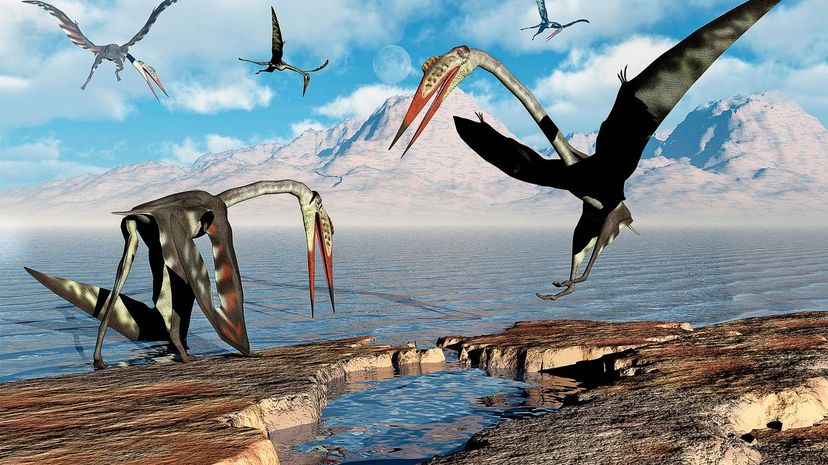
A dinosaur with a funny name and a funny shape, the Quetzacoatlus was a dinosaur that could fly. With a 36 foot wingspan, it is considered the largest flying animal ever known or discovered.
Advertisement

What happens when a long-necked dinosaur turns into a carnivore? The Therizinosaurus is our answer. It has shorter front legs, a long tail and a long neck, making it one of the most unique dinos ever discovered.

At first glance, you might think that the Ichthyosaur is part dolphin and part swordfish. However, this beast is neither mammal nor fish. It is a reptile that lived in the time of the dinosaurs.
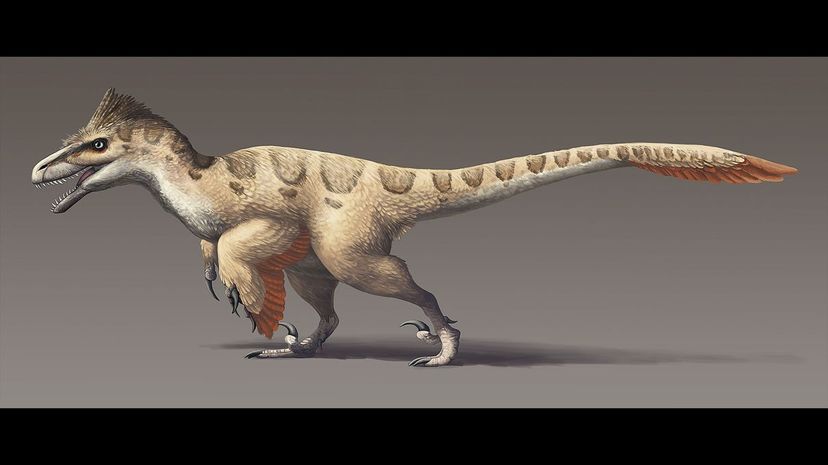
The Utahraptor was around six feet tall, but it was over 20 feet long. It used its tail for balance, like most raptors, but its claws are what we're looking at. Those things are massive!
Advertisement
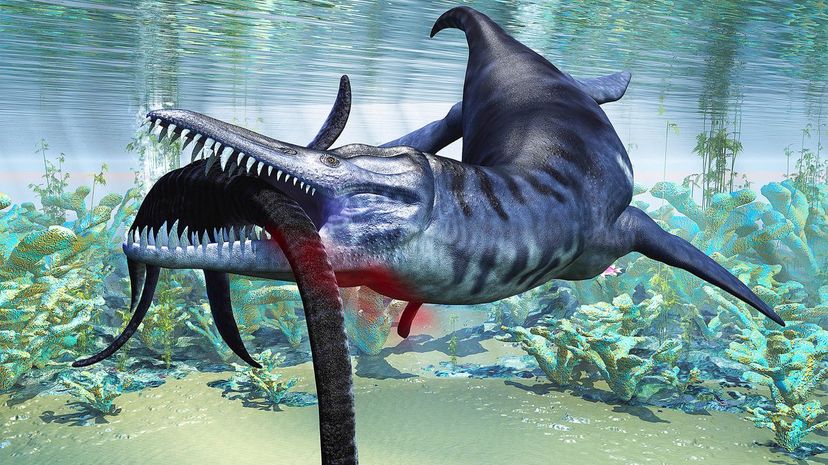
Somewhere between a whale and an alligator lies the Liopleurodon. This massive beast reached up to 23 feet long and though its teeth were sharp, they were smooth on the sides (not serrated).
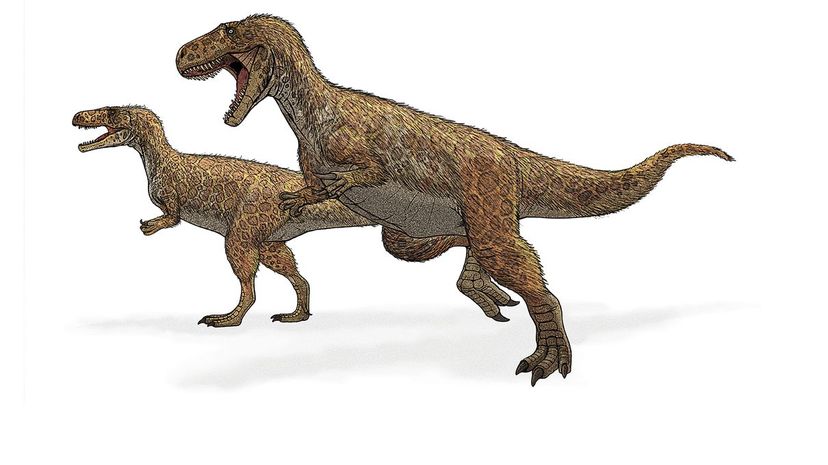
The Megalosaurus has features that mimic the Tyrannosaurus Rex. However, the Megalosaurus is generally found in Southern England, while the T-Rex is usually found in Western North America.
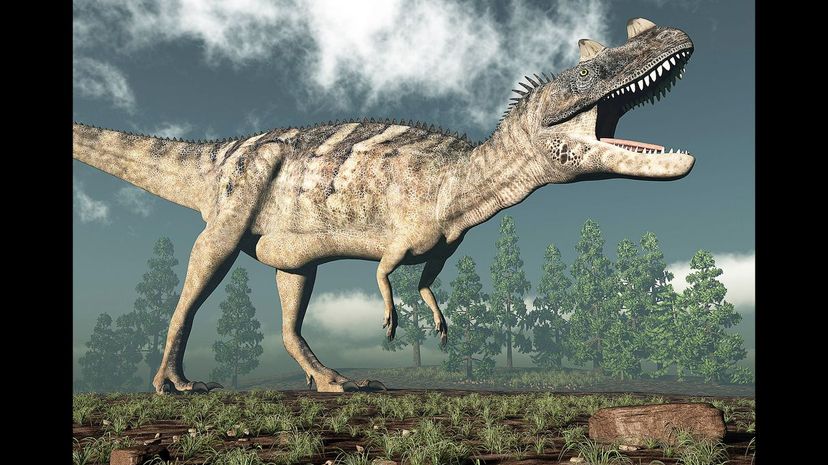
Ceratosaurus means "horn lizard," and this dinosaur doesn't disappoint. It is a hard-headed carnivore with short arms. It is estimated that the Ceratosaurus lived up to 162 million years ago.
Advertisement
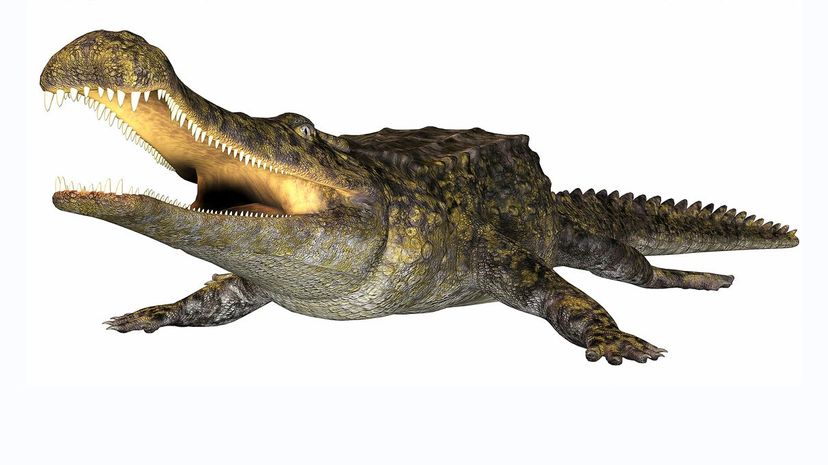
The Sarcosuchus lived nearly 145 million years ago, and didn't go extinct until about 93 million years ago. It was a good run, as far as dinosaurs are concerned. Its hunting method was ambushing.
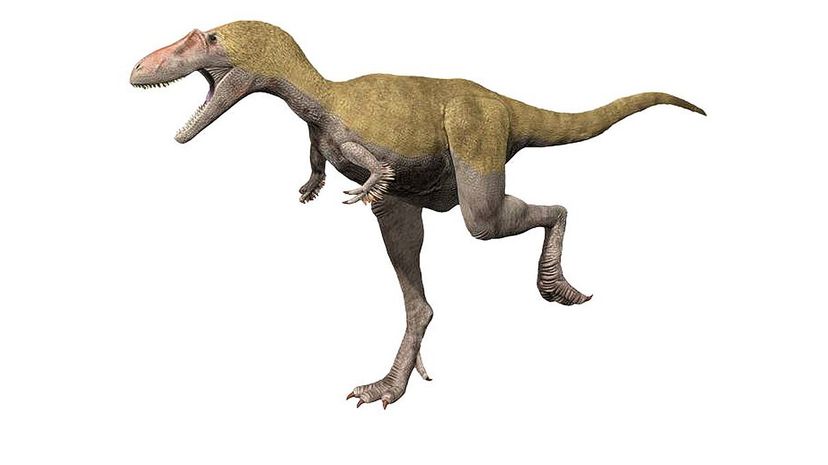
The Albertosaurus is closely related to the Tryannosaurus Rex, and it lived very close to the same area. However, its remains have only been found in what is now considered Alberta, Canada.

This raptor definitely had features. Though it could grow as tall as eight feet, it was generally around five feet high, and it was very light as far as weight is concerned ... coming in at around 75 pounds.
Advertisement
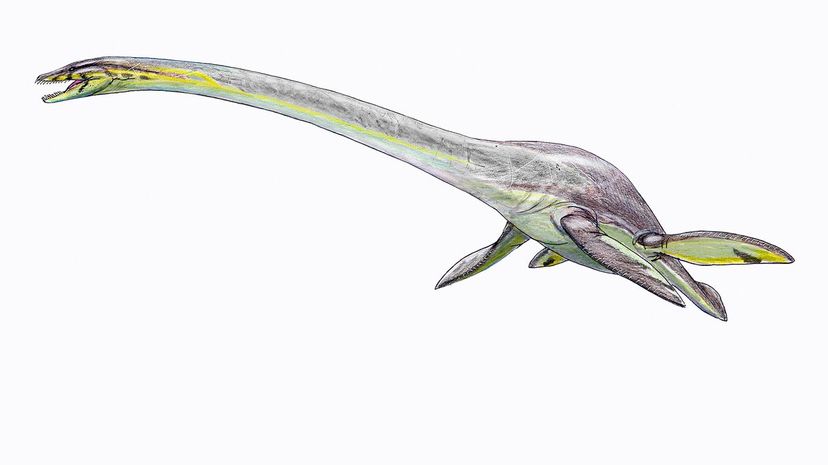
While this might look a lot like the Loch Ness Monster, the Elasmosaurus is theorized to live in North America. It was an aquatic dinosaur that grew up to 34 feet tall and fed on small prey.
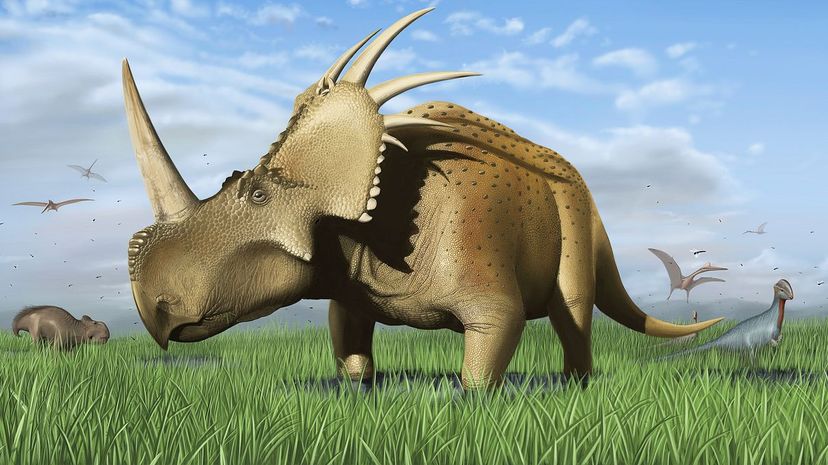
Sure, it looks a lot like a Triceratops, but this was a completely different dinosaur. The Styracosaurus had more horns, but was still a herbivore that was hunted by Gorgosaurus in the Cretaceous Period.
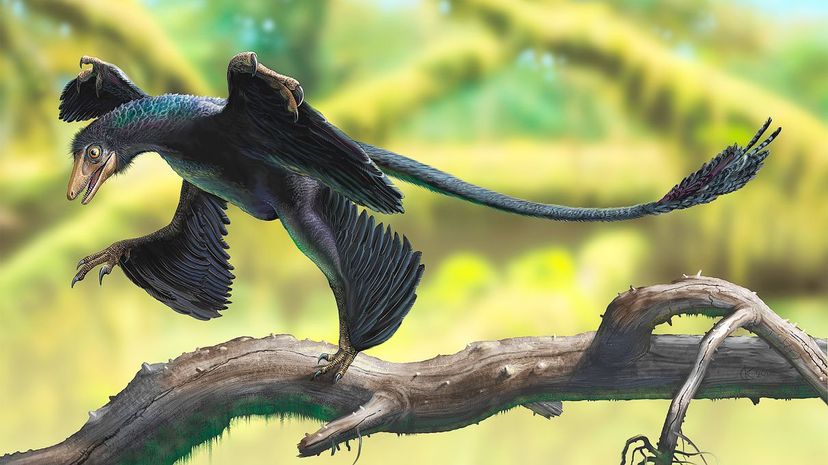
The Microraptor had two sets of wings. The wingspan reached around three feet, and the body of the dinosaur itself only reacted about four feet long. If you've ever seen an eagle, you probably had a good idea of how big this "small" dinosaur was.
Advertisement
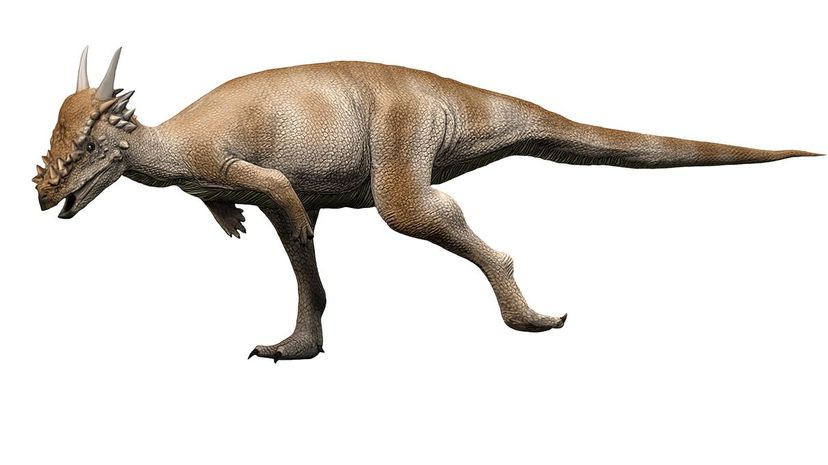
Many believe that a Stygimoloch is merely a younger Pachycephalosaurus, but others consider it a species all its own. While they look like carnivores, they tended to eat ginkgo and puzzlegrass.
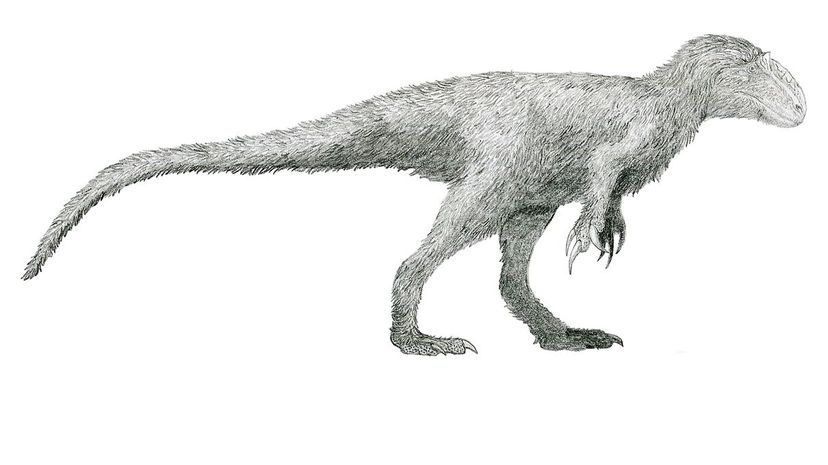
At first look, the Yutyrannus looks very much like a Tyrannosaurus with a fur coat on ... making it seem like it is derived from a child's imagination rather than archaeology. However, this carnivore really lived and was found in Northeastern China.
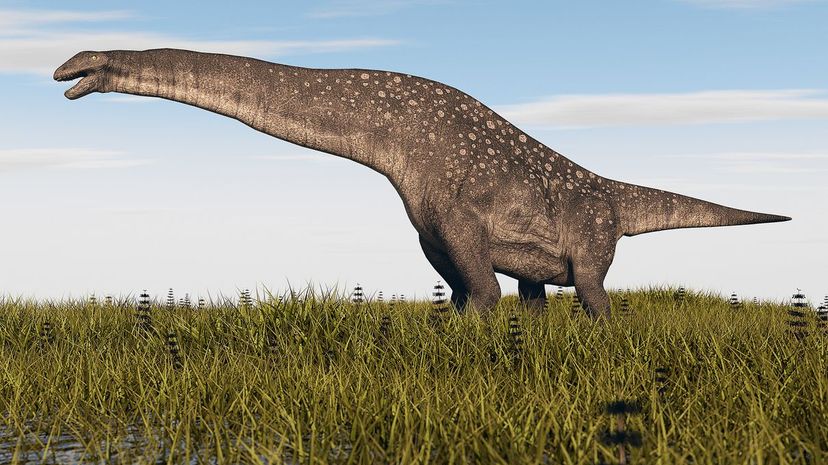
Titanosaurus was a long-necked dinosaur that lived in what is now India. It's wide chest and slim pelvis make this large herbivore distinctive from other long-necked dinosaurs of its time period.
Advertisement
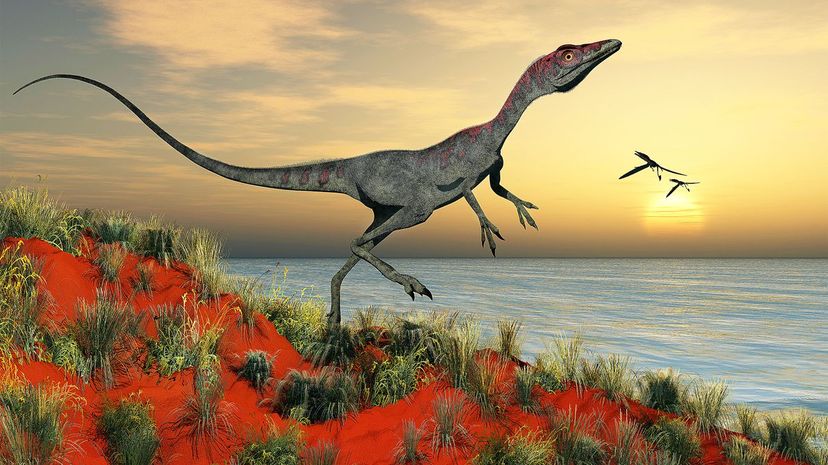
These little guys were about the size of small dogs, but they could eat a lot of meat. Yes, they were carnivores who preferred to eat Bavarisaurus. These little guys were roaming the Earth during the late Jurassic Period.
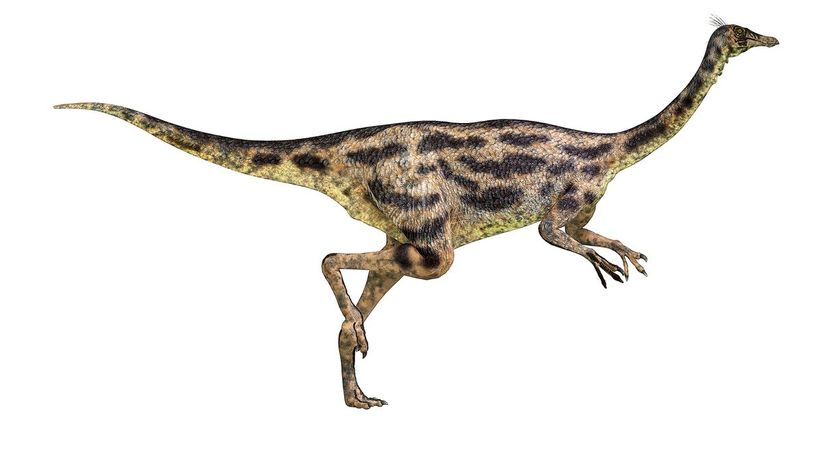
While the Gallimimus could reach about six and a half feet tall, it was nearly 20 feet long and weighed up to 440 pounds. It was first discovered as late as 1965, and it is classified as an omnivore.
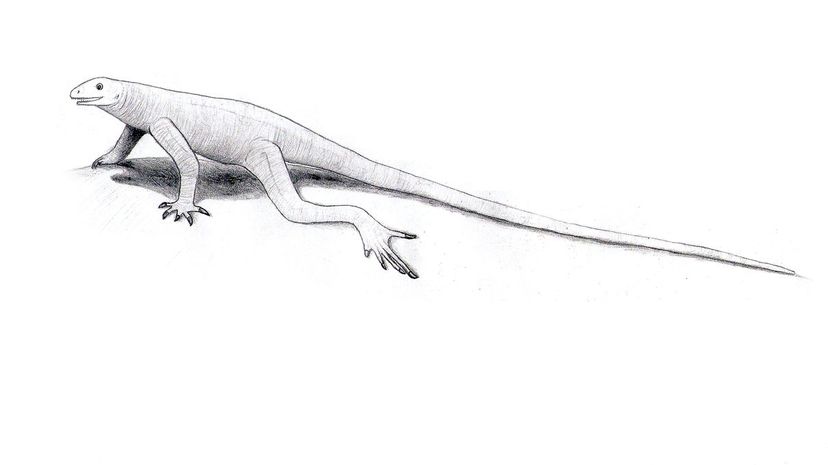
No, these aren't the little cream-filled dinosaurs; however, they did make a great meal for smaller carnivores like the Compsognathus. They only grew to be about twelve inches in length, but they could move pretty fast.
Advertisement
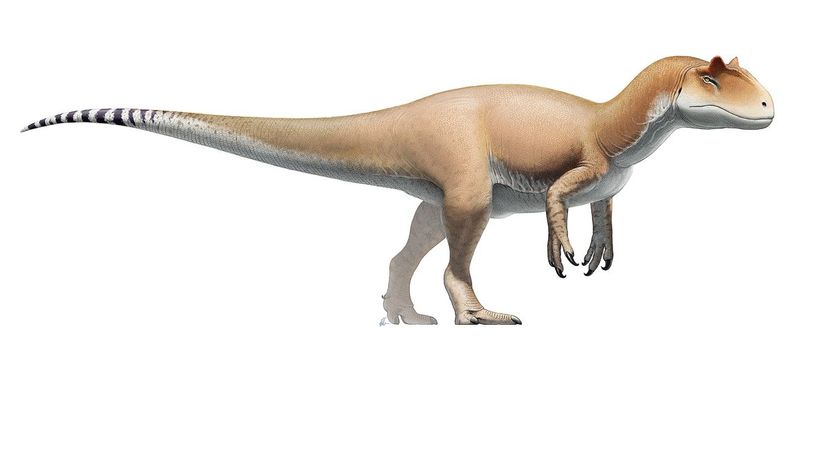
This terrifying creature could run up to 34 miles per hour to catch its prey. It's name literally means "different lizard." It is estimated that the Allosaurus lived nearly 165 million years ago.